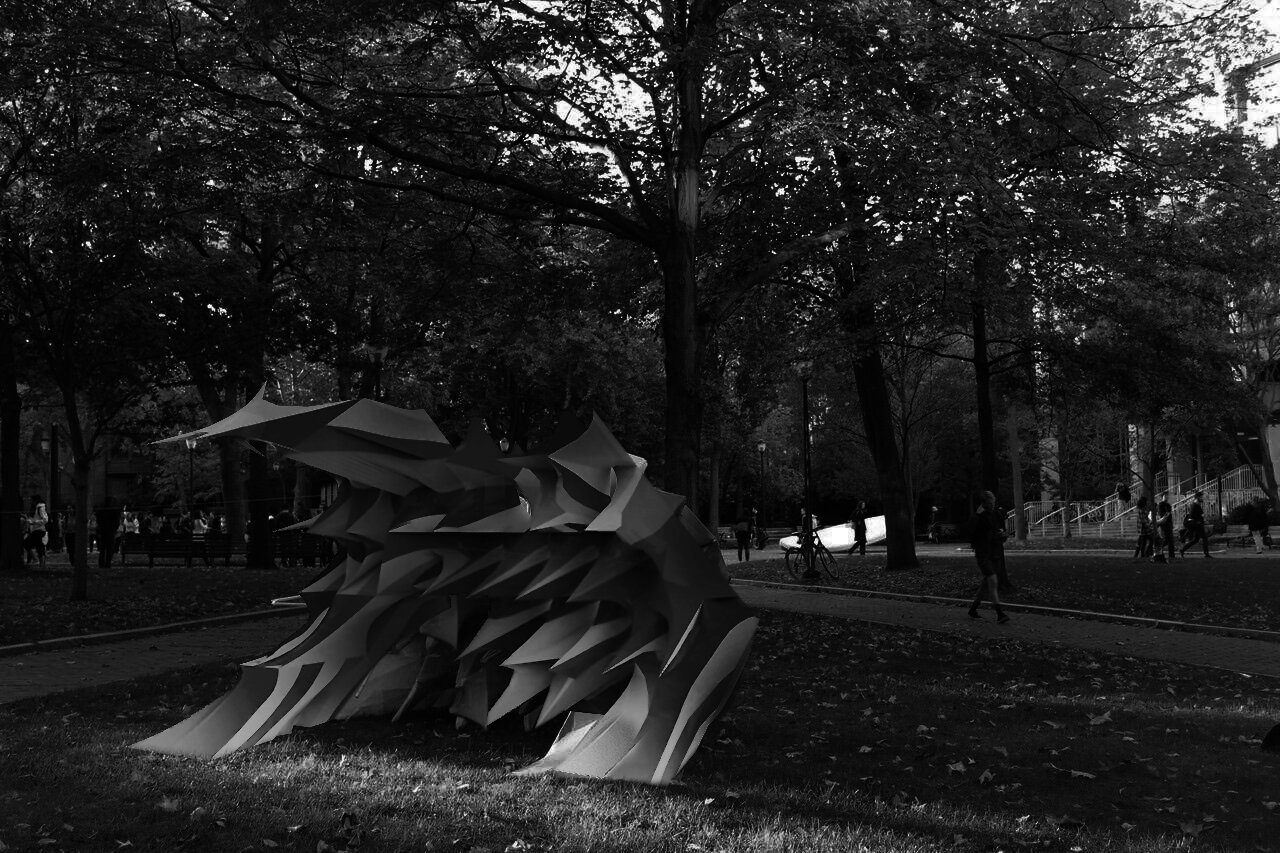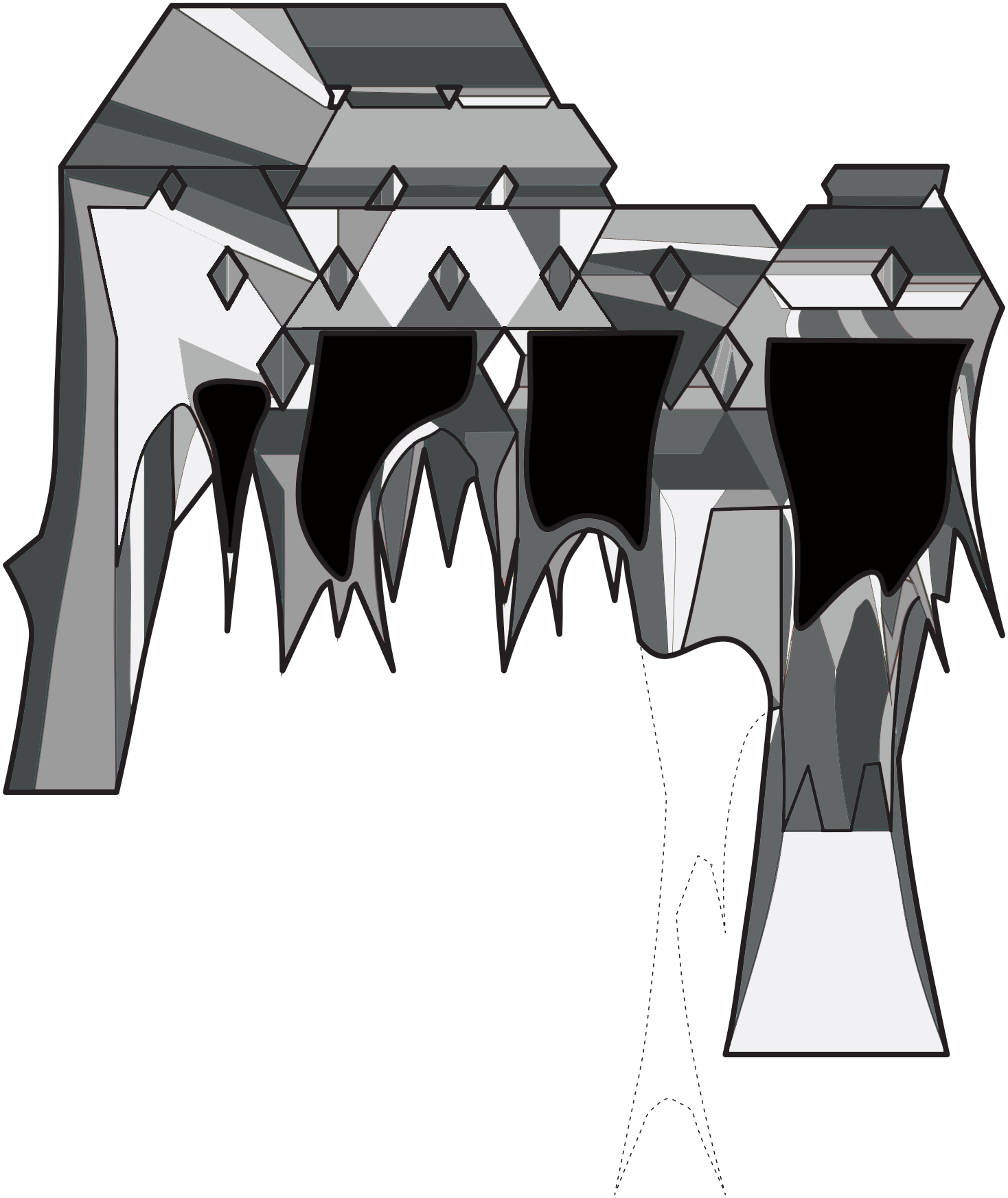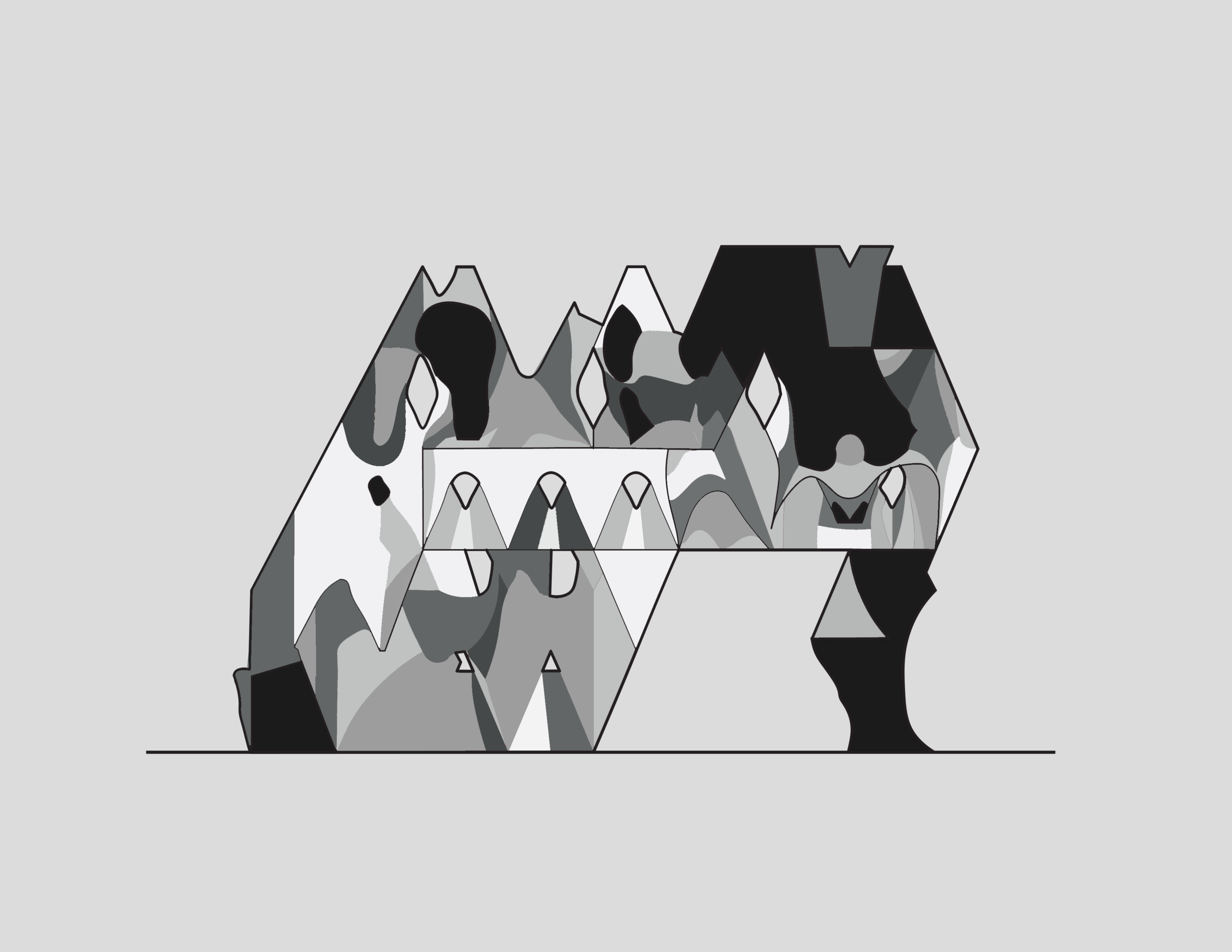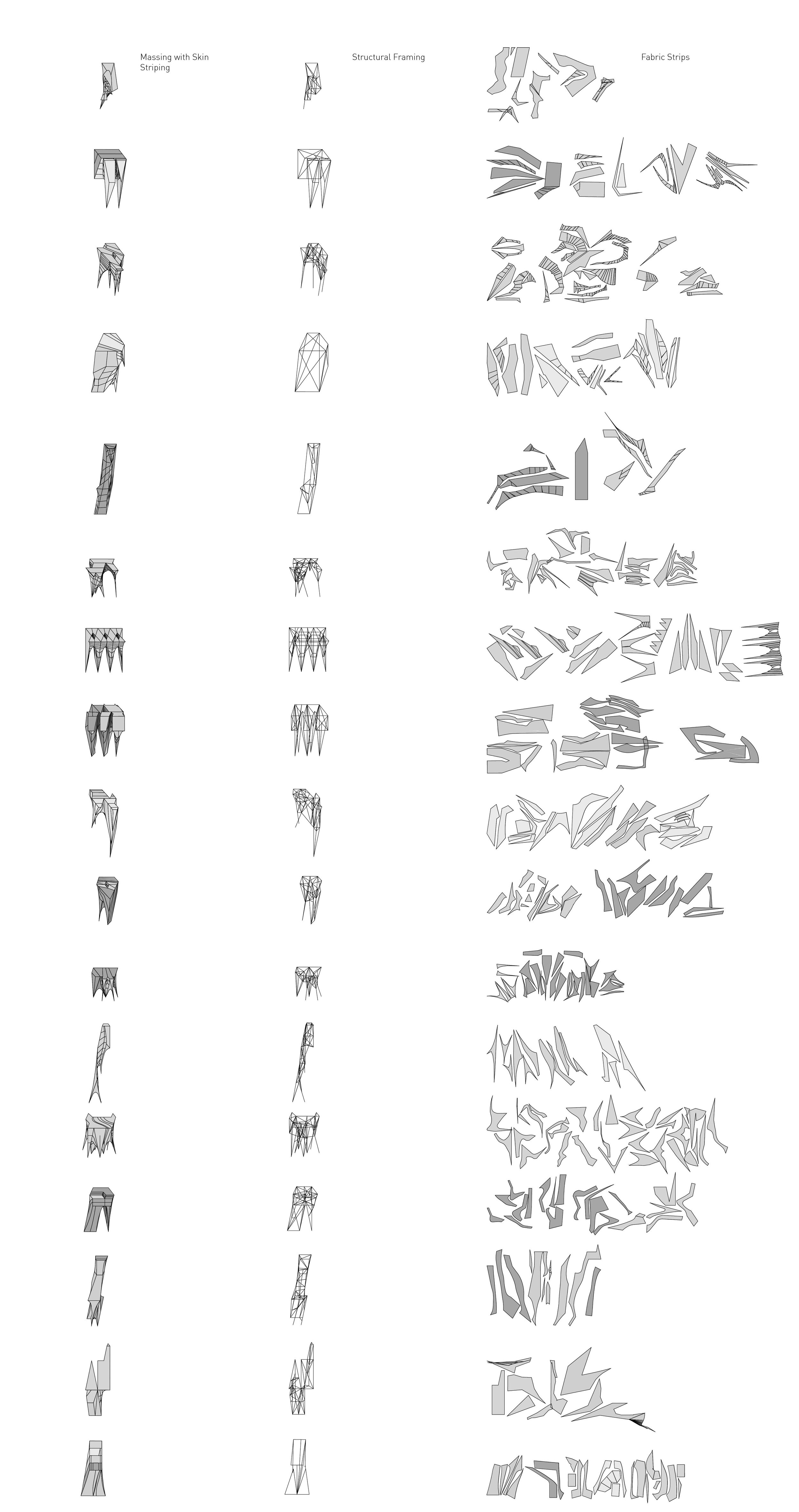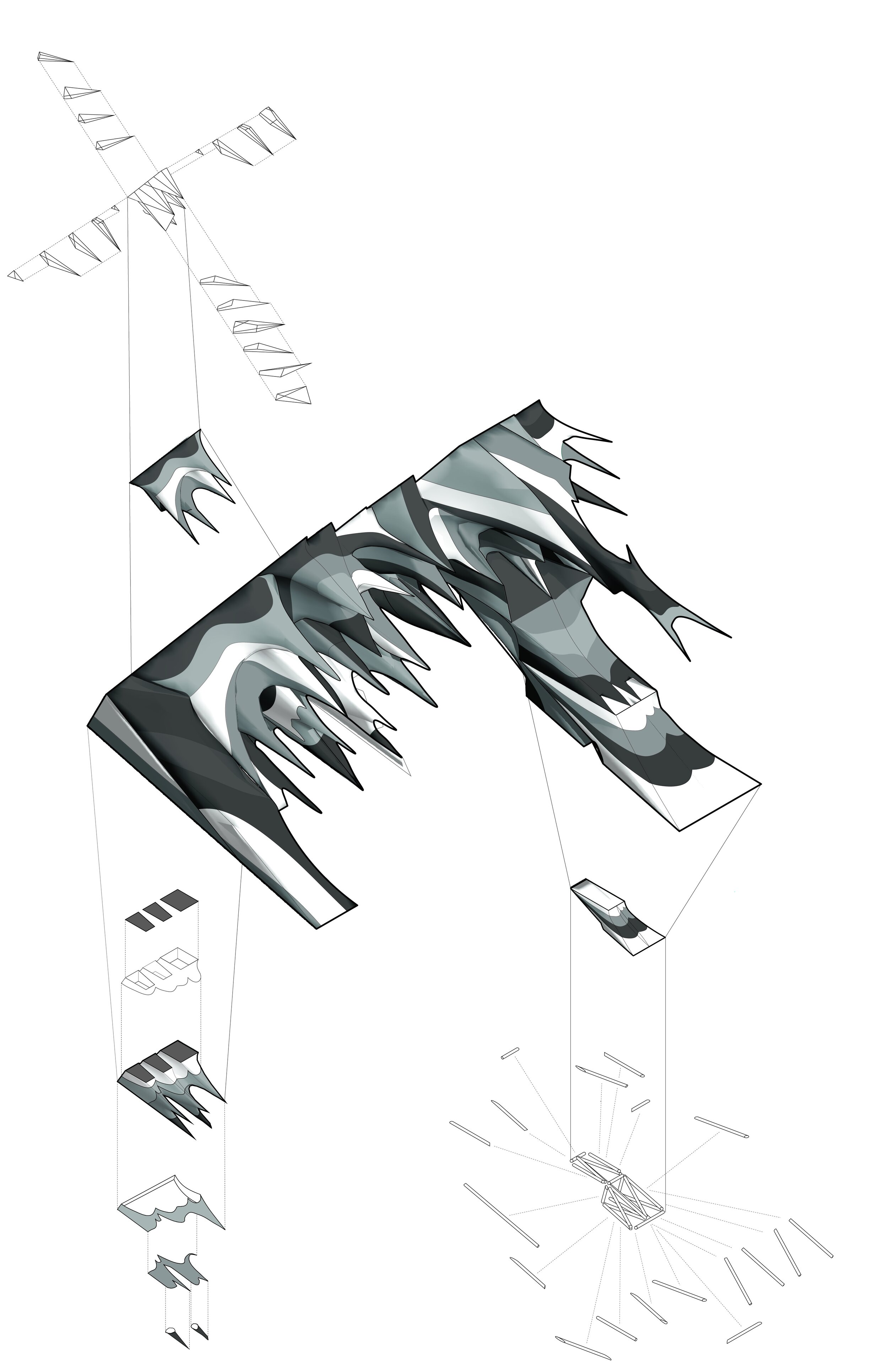PARALYTENS
TENSILE PAVILION
Paralytens interrogates the identity of part-to-whole aggregations and explores a relationship between conventional and unorthodox structural systems. The form consists of a nested series of geometric components united into meta-components via a tensile membrane that blurs the boundary between part and whole. Paralytens can also be infinitely aggregated to create a larger composition, allowing it to exist at a multitude of scales. The sheared external wall includes perforations that engage the viewer from outside, while the provocative interior spikes create a moment of surprise and reveal. This expresses a formal dichotomy that entices movement and engages viewers beyond the point of observation. The overlay of a striped pattern further blurs the part-to-whole relationship and creates multiple levels of formal and structural agency. The strips rely on one another to create a tensile shell for the underlying structure. Together these pieces act as a membrane that secures an underlying skeleton in moments of tension and compression. A flexible framing system supports the fabric from underneath, while relying upon the taut material to ensure the stability of its components. An acrylic coating freezes the peaks of the form in a moment of expression, unifying the structure in a final layer of flexible strength.
Philadelphia, Pennsylvania | Fall 2015
In Collaboration with Lillian Candela, Danielle Lands, Yuhao Wu, and Sylvia Wang
Advised by Ezio Blasetti
